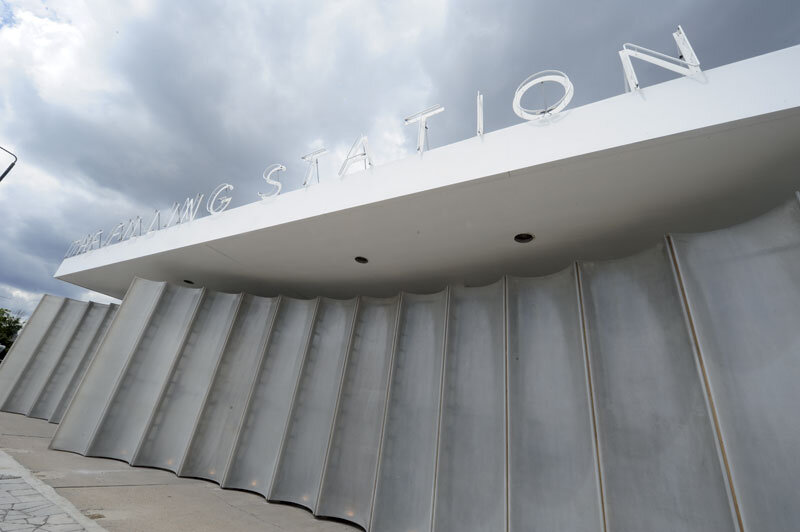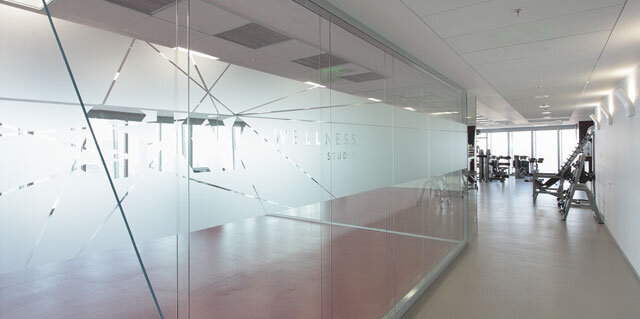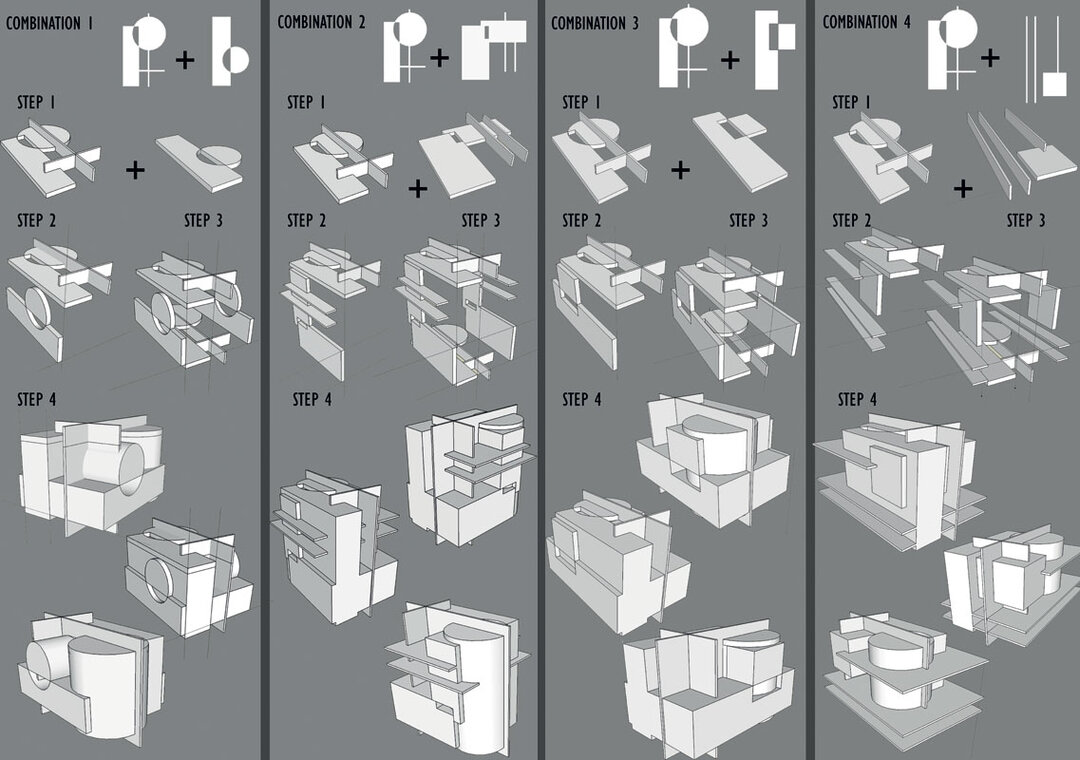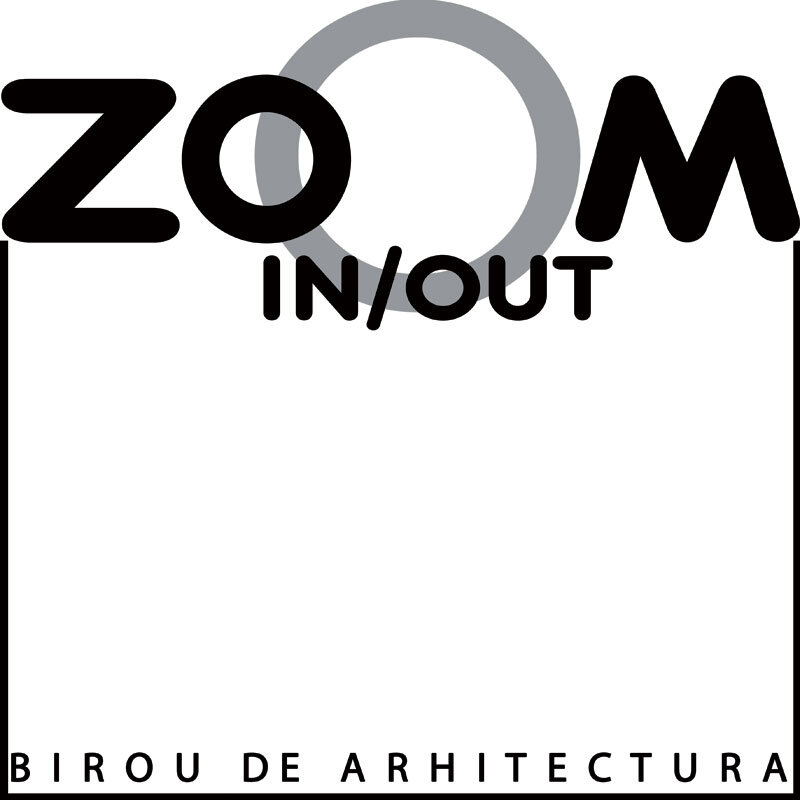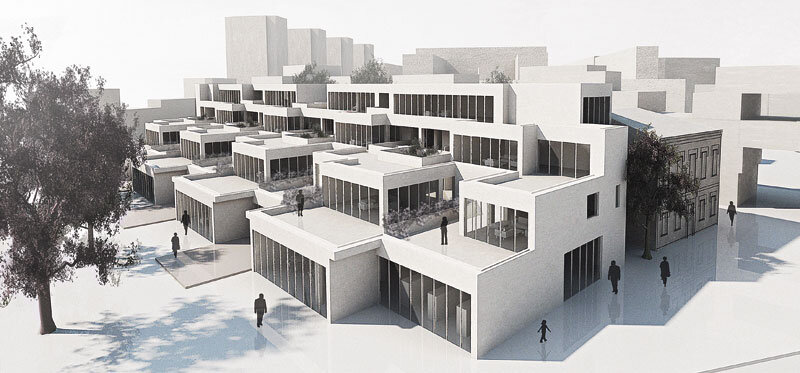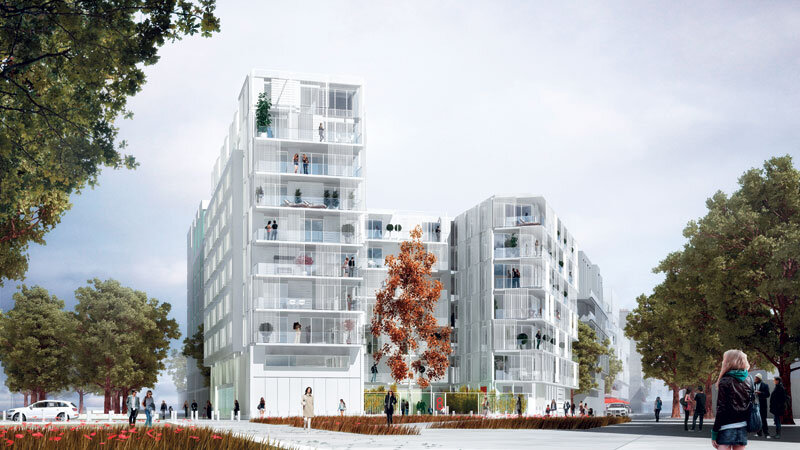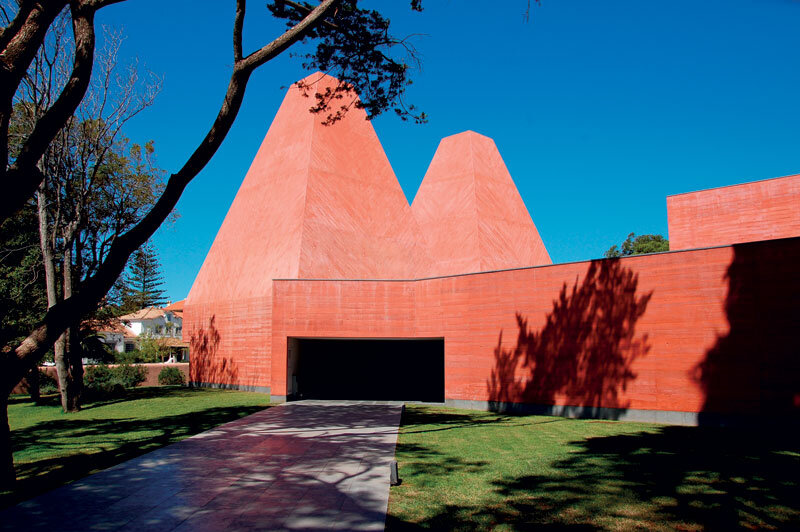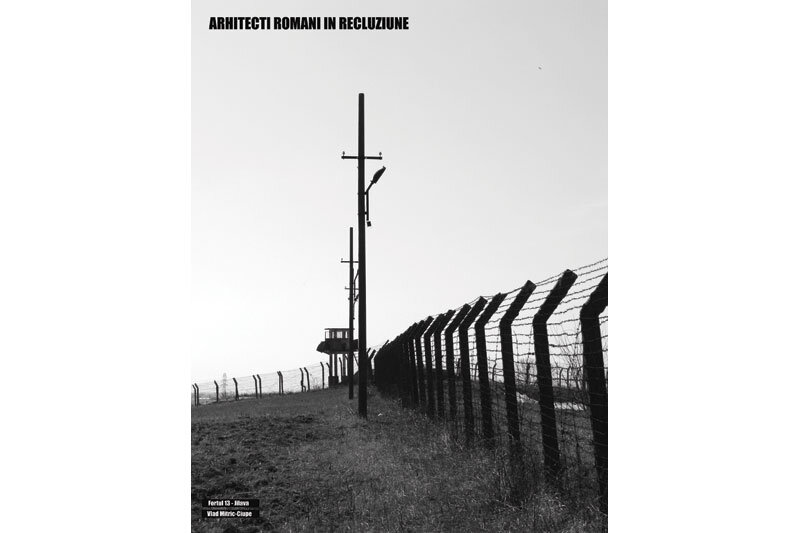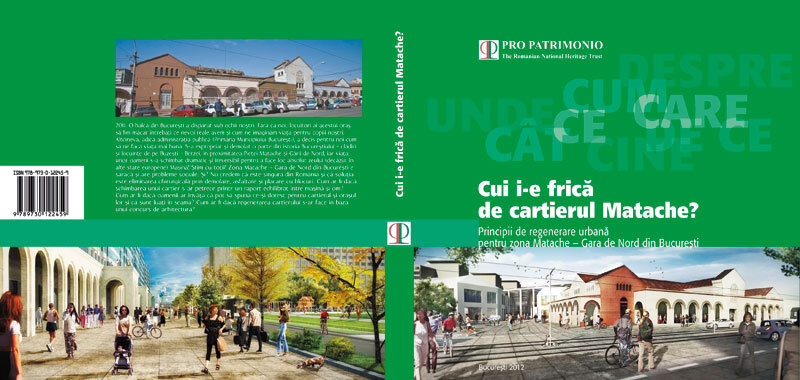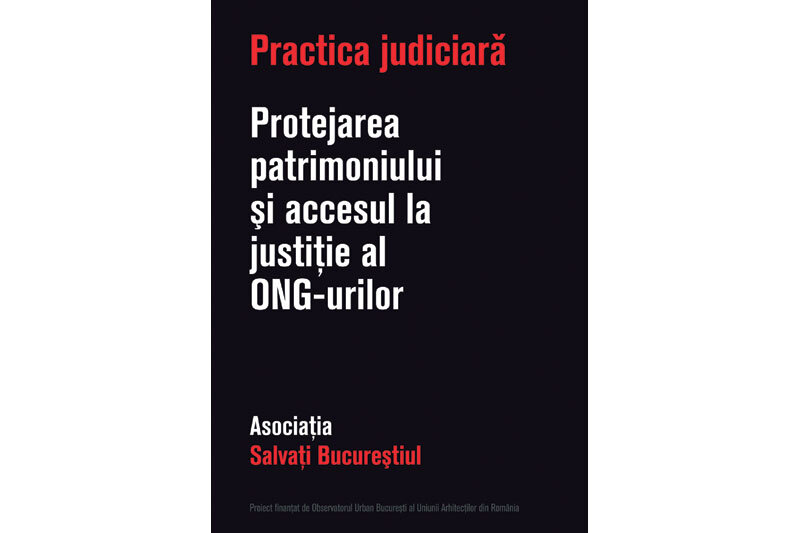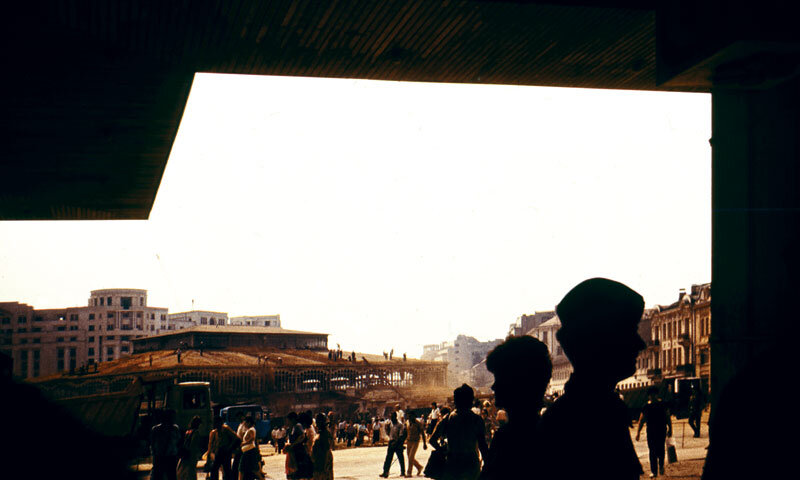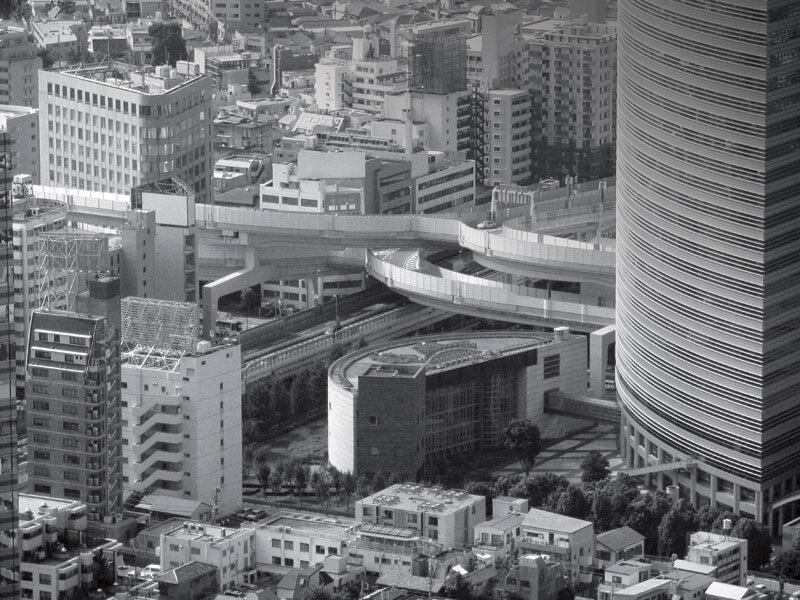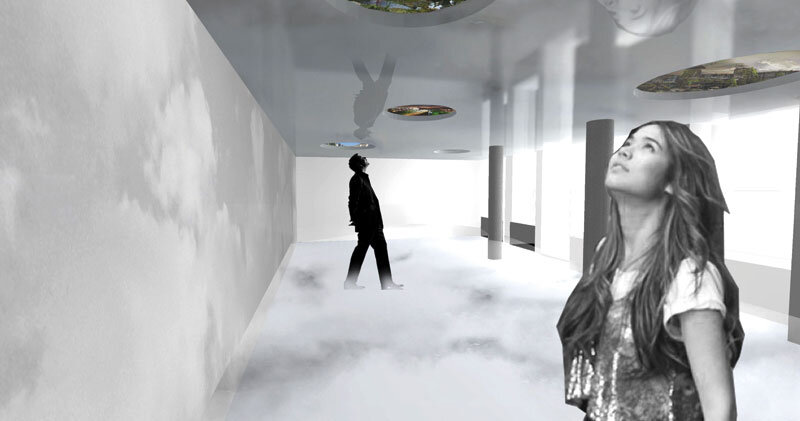
Marcel Iancu și Alfabetul său formal: un exercițiu didactic în derulare (I)

Marcel Iancu and his formal alphabet:
an on-going didactic experiment (I)
| Prima variantă a acestui proiect s-a întocmit, dacă îmi amintesc corect, undeva în 2001-2002, cu Horia Dinulescu, Florin Tiberiu Barbu și Anca Popescu. Cei trei, studenți pe atunci, au venit la mine și m-au rugat să îi dopez, pentru că ritmul și explicațiile de la proiectare li se păreau deșirate, ca să folosesc un eufemism.
Întâi îmi amintesc că am făcut un exercițiu de aducere la zi a „circului foamei” din Rahova, pe atunci încă ruină neterminată (acum e mall). Ideea era să convertim ruina într-o comunitate locuită, cu un spațiu public și un lăcaș de cult sub cupola centrală. Nu știu dacă ei mai au acel proiect. Îl propusesem pentru că un alt student al meu făcuse un studiu extrem de interesant pe așa-numita Casă Radio, pe care o privea ca teren pliat de dezvoltare imobiliară, ca pe o megastructură în care înșuruba casele demolate pentru a construi măgăoaia. Era un proiect polemic și politic. Din nefericire, comisia de prediplomă i-a respins proiectul, ca fiind prea radical și neserios: dacă vom găsi vreodată banii spre a termina, totuși, edificiul stalino-ceaușist? Se înțelege că faptul dovedit de student - că exista deja un studiu făcut de Hilton pentru un proiect de conversie a ruinei neterminate - nu a mișcat pe nimeni. Ne aflam în protoistoria bulei imobiliare. Între timp, s-a și spart bula și, desigur, ruina a rămas într-o stare MULT mai proastă decât la început din cauză că varii comisii de primărie, cu demnitate jignită, au impus condiții maximaliste parteneriatului public/privat ce se înfiripase. Tot ce nu au cerut vreodată de la autoritățile statului și/sau de la ei înșiși, au cerut acestui proiect. Nu e de mirare că investitorul privat și-a strâns pușculița râvnită și a plecat în locuri mai binevoitoare cu investitorii.... Cert este că, puțin înainte sau după experiența (nefericită) a câștigării concursului pentru Catedrala Patriarhală Ortodoxă „Sf. Apostol Andrei și Înălțarea Domnului”, din 2002, unde toți trei mi-au fost alături, am trecut la acest experiment pornind de la un desen al lui Marcel Iancu, publicat în Contimporanul, în 1924. Masivul studiu, catalog al expoziției eponime, publicat de Simetria, îl conține, dar nu îl explică. Este el urmat de vreun text care să ne spună ceva mai mult? Există studii care să fi investigat recurența acestui alfabet în opera artistului? Era alfabetul extras din opere anterioare, formalizând, adică, un limbaj idiomatic autoidentificat? Sau, dimpotrivă, artistul își propunea să îl utilizeze într-o serie de lucrări posterioare publicării? Nu ști(a)m. Ne aflam, ne-am spus, în posesia unui document excepțional, ca alfabetul unei limbi dispărute. Ce îndreptățire avem să facem acest lucru? Simplu: o parte din efortul deconstructivismului a fost direcționat spre recuperarea experimentelor neduse până la ultima consecință, ale avangardei istorice europene, în speță ale constructivismului rus. |
| Citiți textul integral în nr 3/2012 al revistei Arhitectura. |
| If I remember rightly, the first version of this project was put together sometime in 2001-2002, with Horia Dinulescu, Florin Tiberiu Barbu, and Anca Popescu. The three students, as they were at the time, came and asked me to pep them up, because they thought the rhythm and explanations of the design process were too long-winded, to use a euphemism.
I remember that first we did an exercise in bringing up to date the “hunger club circus” on Rahova Avenue, which was an unfinished hulk at the time (now it’s a mall). The idea was to convert the ruin into an inhabited community, with a public space and a place of worship beneath the central cupola. I don’t know whether they still have the designs. I had suggested it to them because another of my students had done an extremely interesting study on the so-called Casă Radio, which he viewed as a site adapted to real-estate development, as a mega-structure in which he inserted demolished houses to construct a bugaboo. It was a polemical and political project. Unfortunately, the pre-diploma commission rejected the project as being too radical and unserious: what if we manage to come up with the money to finish Ceaușescu’s Stalinist edifice? Obviously, the fact that the student had shown that Hilton had already done a study for a project to conserve the unfinished ruin didn’t influence anybody. This was du-ring the pre-history of the real-estate bubble. Meanw-hile, the bubble has burst and, of course, the ruin is in a much more ruinous state than it was in the first place, because various city-hall commissions, with wounded pride, have imposed maximalist conditions on the public/private partnership that has been put together. All the things they have never demanded from the state authorities or themselves they have demanded from this project. It is no wonder that the private investor has gone off in search of more investor-friendly climes, taking his much-coveted piggy bank with him. What is for sure is that immediately before or after the (unfortunate) experience of winning the competition for the “St. Andrei the Apostle and Ascension of the Lord” Patriarchal Orthodox Cathedral in 2002, when all three students were shoulder to shoulder with me, I went on to do this experiment, setting out from a drawing by Marcel Janco, published in Contimporanul in 1924. The hefty study, which was the catalogue for the exhibition of the same name, published by Simetria, includes it, but doesn’t explain it. Is it accompanied by any text to tell us more? Are there any studies that have investigated the recurrence of this alphabet in the artist’s work? Was the alphabet drawn from previous works, i.e. did it formalize a self-identified idiomatic language? Or, on the contrary, did the artist intend to use it in a series of works subsequent to publication? We didn’t and still don’t know. As I have said, we find ourselves in possession of an exceptional document, like the alphabet of a vanished language. What justification do we have for doing this? Simple: part of the endeavour of deconstructivism has been aimed at recouping the unfinished experiments of the historic |
| Read the full text in the print magazine. |


